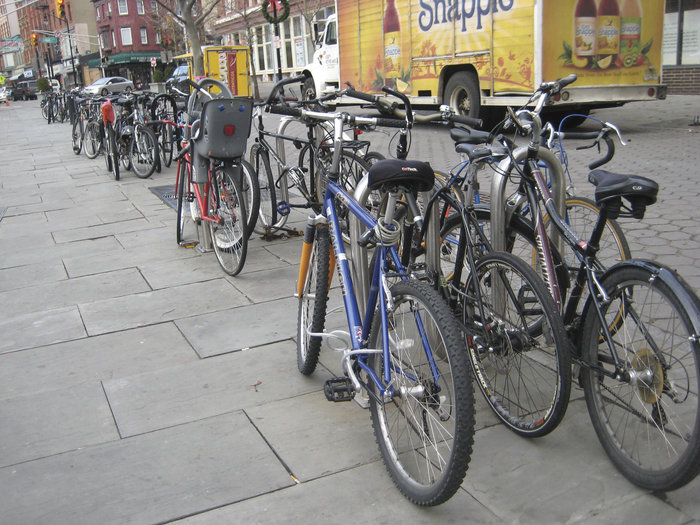It’s that time of year again. Sure, some folks bike all year round, but spring and summer is when the rest of us get out our bikes—for recreation or transportation. Speaking anecdotally, I’d say bike theft is rampant. Three of my bikes have been stolen, and many of my friends, acquaintances, and coworkers have had their bikes stolen.
So, what to do? Dave Wagner is a sales associate, bike mechanic, and director of social media at Grove Street Bikes on, you guessed it, Grove Street. “Bike designers are often not thinking about bikes in the city,” Wagner says. In suburbs and rural areas, people just leave their bikes on the lawn, and nothing happens, but not in Jersey City.
Kryptonite locks, Wagner says, are the industry standard. “We’ve been using them for years now and never had issues,” he says.
But he cautions that the simple cable lock with either a key or a combination is suitable only for about 15 or 20 minutes at a time. “If you’re sitting at a café and can see out the window and keep an eye out,” they’re fine, he says.
The gold standard for locks is the U lock. Wagner says he rarely sees instances of a U lock being picked or broken or cut. Though they come in various sizes, Wagner says the smaller ones are handy because they can fit in your back pocket.
A cheaper alternative is to go down to the hardware store and buy a length of heavy chain along with a padlock. “That’s a budget route that will prevent most bike thieves from attempting to steal from you,” Wagner says.
You’ve probably noticed bikes that are locked up but missing their front wheels. This means either that the front wheel has been stolen or the owner took it off to keep the bike from being stolen. If you’re lucky enough to be the owner who has removed the wheel, the best thing to do is to line up the front wheel with the back wheel and lock them together with a big U lock. Otherwise, you can carry your front wheel around with you, along with your purse, briefcase, coffee, or whatever. Carrying a bike wheel has a certain cachet.
You may have also noticed bikes without seats. Sometimes owners take them, but seats often get stolen from bikes with “quick-release” seat posts. The value of quick-release seat posts is that with folding bikes, you can quickly get the seat back to its right height. And if couples are sharing a bike, they can change the seat height without tools. But if you are worried about theft, Wagner says, “Stay away from quick-release parts.”
Just as car thieves have favorite makes and models, so do bike thieves. They prefer high-end brands, as opposed to something you might pick up at Target or Wal-Mart. The quality brands include Specialized, Trek, and Cannondale, as opposed to brands like Pacific, Magna, or Next. “Bike thieves know what they’re after,” Wagner says. “They can’t sell or get as much money for a low-end bike.”
Where you lock your bike is also important. “Use a bike rack,” says Jay DiDimenico, director of the Hudson Transportation Management Association, “not a lamp post, municipal parking meter, or on private property.” That last one is important. Some property owners don’t like bikes locked up on their outdoor fences. When summoned, “The Port Authority police will cut the locks,” DiDimenico says.
When my last bike was stolen, everyone advised me to report it to the cops, but my problem was, how do I prove that the bike is mine? I pictured the cop saying, “Your word against his, lady.” Well, there’s a simple solution. “Every bike has a serial number stamped on the bottom bracket shell,” Dave Wagner says. “It’s stamped into the frame.” If you keep the serial number with you at all times, you can report the bike with its serial number to the cops. “It’s good to have on hand,” Wagner says. “Some people program them into their smart phones.”
Smart move.—JCM
